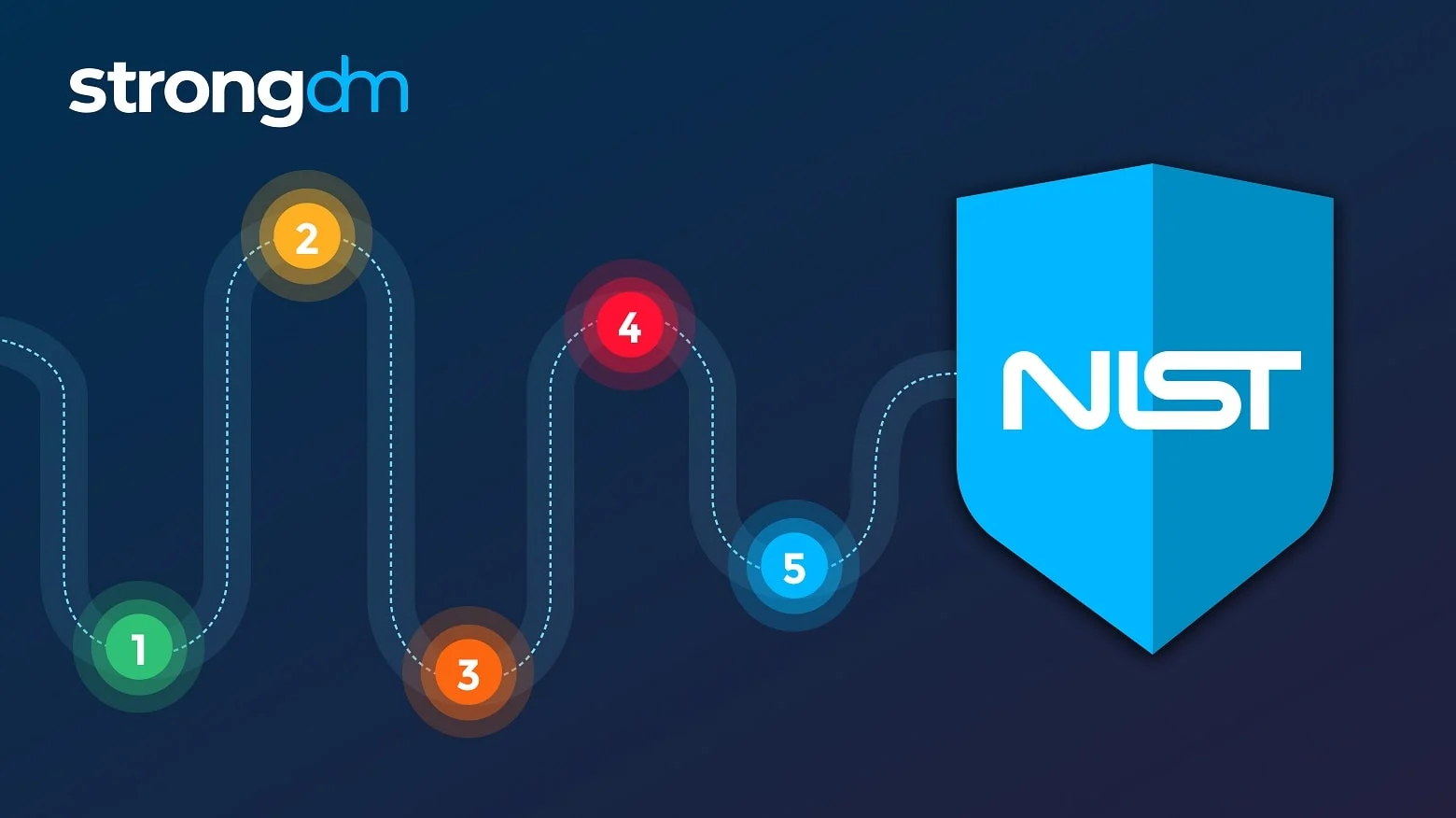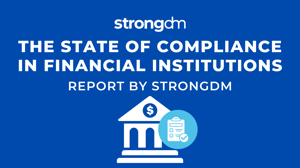NIST 800-53 Compliance Checklist: Easy-to-Follow Guide


Written by
Schuyler BrownLast updated on:
October 17, 2025Reading time:
Contents
Built for Security. Loved by Devs.
- Free Trial — No Credit Card Needed
- Full Access to All Features
- Trusted by the Fortune 100, early startups, and everyone in between
Summary: In this article, we’ll explore the basics of NIST 800-53 compliance and cover the complete list of NIST 800-53 control families. We’ll also provide a 5-step NIST 800-53 checklist and share some implementation tips. By the end of the article, you’ll know how organizations can use the NIST 800-53 framework to develop secure, resilient information systems and maintain regulatory compliance.
NIST 800-53 Control Families (Full List)
NIST 800-53 provides comprehensive security policies and controls, broadly covering five major areas:
- Identify: Identification and management of assets, including risk management
- Protect: Protection of assets and data security, including user access control and least-privileged access controls for NIST 800-53 privileged access management (PAM)
- Detect: Continuous monitoring and discovery of anomalous activities
- Respond: Methods and strategies for identifying and mitigating threats
- Recovery: Restoration procedures for recovery from a system failure or attack
The NIST 800-53 framework comprises 20 control families that include over 1,000 individual controls. Collectively, these controls ensure the privacy and security of IT environments that manage sensitive or regulated data, including all U.S. federal information systems except those related to national security. NIST 800-53 classifies controls into three risk categories—low, moderate, and high—depending on their level of impact.
NIST 800-53 Control Families List
|
|
NIST 800-53 Compliance Checklist Overview
The process of becoming NIST 800-53 compliant can be lengthy. Organizations might need to develop new internal processes and establish stronger policies for securing physical assets and facilities. In addition, initiatives can require an investment in hardware or software, and existing systems might need to be reconfigured or integrated.
Compliance begins with a basic understanding of all 20 NIST 800-53 control families and their scope.
Additionally, NIST requires organizations to appoint an individual or team responsible for assessing, implementing, monitoring, and updating the controls to maintain ongoing compliance. In order to customize the controls to meet the needs of the organization, the designated implementation person or team will need a solid grasp of existing policies, standard operating procedures, and systems.
NIST 800-53 Checklist: 5 Steps to Compliance
Organizations can achieve compliance across all systems and networks, as NIST 800-53 controls apply to both cloud and traditional environments.
While all organizations must meet the specified minimum requirements for compliance, those needing more robust measures can opt to implement additional controls from the NIST 800-53 catalog. A customized implementation increases security and privacy, ensures consistent application across the entire IT infrastructure, and protects against a wider variety of threats.
The following NIST audit checklist outlines the five steps to achieving compliance:
Step 1: Attain a data security baseline
Follow NIST 800-53 guidelines to implement the framework’s minimum baseline controls.
Step 2: Use control enhancements to fortify the baseline
Expand upon the baseline controls by implementing control enhancements within each family.
Step 3: Document controls to prove compliance
Keep detailed records of implemented controls, processes, and related activities to provide evidence of compliance to auditors.
Step 4: Perform routine and emergency audits
Maintain and continuously improve compliance by conducting audits on a regular schedule and after a security incident occurs.
Step 5: Provide ongoing training
Educate all employees on security policies and train IT teams how to follow best practices for identifying and mitigating cybersecurity risks. Ensure compliance teams stay current with revisions to the NIST 800-53 framework.
NIST 800-53 Implementation Tips
Although NIST 800-53 is mandatory for most federal agencies, organizations in the private sector can choose to implement ISO 27001 instead. So, what’s the difference between NIST 800-53 vs. ISO 27001? Both standards are similar in structure and content. The biggest difference is scale—ISO 27001 is a global framework, whereas NIST 800-53 is limited to the U.S.
Before adopting NIST 800-53, organizations need to examine all existing policies relevant to the implementation. This assessment should also consider how NIST 800-53 controls might complement other implemented frameworks, such as
- Federal Information Security Management Act (FISMA)
- Federal Information Processing Standards (FIPS)
- Payment Card Industry Data Security Standard (PCI DSS)
- Health Insurance Portability and Accountability Act (HIPAA)
In addition, organizations must identify sensitive data, including where it is stored and how it is received and transmitted. Data should be classified according to its value to determine what control level should be assigned to each category of data.
After assessing its current security posture and determining an acceptable level of risk, organizations can identify any gaps in their security protocols and take remedial actions. It is imperative to develop a strategic plan that establishes goals, details each step of the implementation, and defines roles and responsibilities. This plan should be reviewed and updated to stay current with evolving business requirements and security standards.
How StrongDM Simplifies NIST 800-53 Compliance
StrongDM helps organizations leverage the robust NIST 800-53 framework to improve their security posture while also maintaining strict compliance with NIST standards. With StrongDM, it’s easy to map organizational policies and procedures to NIST requirements and enhance the baseline by selectively applying low-, moderate-, and high-impact controls from the NIST 800-53 controls list.
StrongDM enables organizations to adhere to their secure access policies, additionally, the granular audit logging improves the ability to detect and respond to potential threats. Comprehensive audit logs support investigations and simplify NIST compliance audits
Achieve NIST Compliance Effortlessly with StrongDM
StrongDM streamlines NIST 800-53 implementation and auditing, making it easier than ever to ensure the security, privacy, and integrity of your data and information systems both on-premises and in the cloud. Choosing StrongDM as your partner will keep your mission-critical infrastructure safe and eliminate the struggles organizations commonly face as they strive to achieve and maintain regulatory compliance.
Want to see how StrongDM can help your organization simplify NIST compliance? Sign up for a free demo today.
Next Steps
StrongDM unifies access management across databases, servers, clusters, and more—for IT, security, and DevOps teams.
- Learn how StrongDM works
- Book a personalized demo
- Start your free StrongDM trial

Categories:

About the Author
Schuyler Brown, Chairman of the Board, began working with startups as one of the first employees at Cross Commerce Media. Since then, he has worked at the venture capital firms DFJ Gotham and High Peaks Venture Partners. He is also the host of Founders@Fail and author of Inc.com's "Failing Forward" column, where he interviews veteran entrepreneurs about the bumps, bruises, and reality of life in the startup trenches. His leadership philosophy: be humble enough to realize you don’t know everything and curious enough to want to learn more. He holds a B.A. and M.B.A. from Columbia University. To contact Schuyler, visit him on LinkedIn.
You May Also Like




